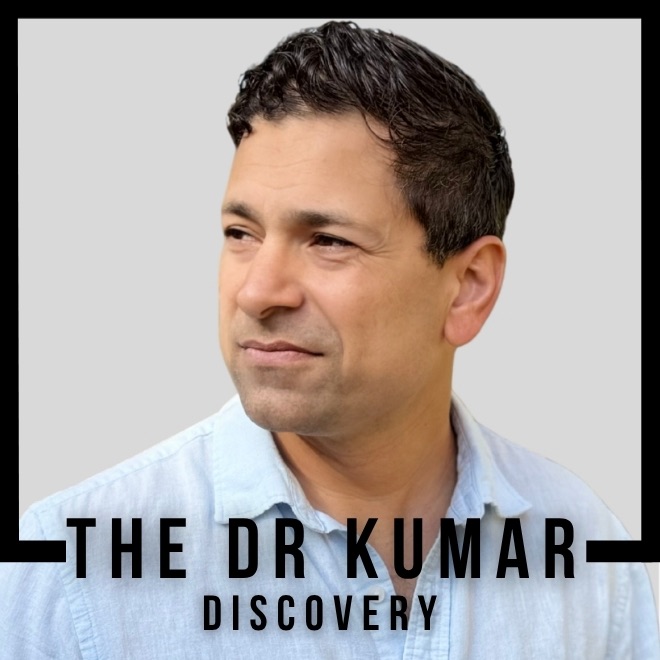Dr. Kumar’s Take:
This study from The Journal of Nutrition helps explain a big mystery in nutrition: why MK-4 is the dominant form of vitamin K found in our tissues, even though we eat mostly vitamin K1 (from greens) and other K2s (from fermented foods). Researchers fed mice different types of vitamin K and tracked how their bodies used it. No matter what kind of K they ate—K1, MK-4, MK-7, or MK-9—their tissues mostly converted it to MK-4. That means MK-4 might be the key “active” form used by our organs, and your body knows how to make it—if it gets enough of the raw materials.
Key Takeaways:
✔ Your body converts all major dietary forms of vitamin K—K1, MK-4, MK-7, MK-9—into MK-4.
✔ MK-4 was the dominant form found in tissues like brain, pancreas, bone, and reproductive organs.
✔ Conversion happens in the gut, and may depend on an enzyme called UBIAD1.
✔ Female mice had more vitamin K in their tissues, possibly due to estrogen.
Actionable Tip:
Make sure you’re getting a mix of vitamin K forms—especially K1 from leafy greens and K2 from fermented foods or supplements—so your body has what it needs to produce MK-4 in tissues where it matters most.
Brief Summary:
This study looked at how different forms of vitamin K are processed in mice. Mice were fed vitamin K1 (phylloquinone), MK-4, MK-7, or MK-9, and researchers used isotope labeling to track how these forms moved through the body. Across all diet groups, tissues like the liver, brain, and pancreas mostly contained MK-4, even if MK-4 wasn’t what was originally fed. This suggests the body has a system in place to convert various vitamin K types into MK-4, which may be the most functional version of the vitamin in tissues.
Study Design:
Two experiments were done:
- In the first study, mice were fed diets supplemented with vitamin K1, MK-4, or MK-9 for 4 weeks.
- In the second study, mice were fed isotope-labeled versions of vitamin K1, MK-4, MK-7, or MK-9 for 1 week.
Tissue levels of different vitamin K forms were measured using high-tech methods like LC-MS.
Results:
- MK-4 was found in nearly all tissues, regardless of the vitamin K type fed.
- Isotope tracking confirmed that K1, MK-7, and MK-9 all get converted into MK-4.
- The conversion happens mainly in the gut and possibly also within tissues using a compound called menadione and the enzyme UBIAD1.
- Female mice had consistently higher tissue levels of vitamin K than males.
- Vitamin K wasn’t detectable in the bloodstream, which may indicate rapid tissue uptake or species differences in metabolism.
How Vitamin K Becomes MK-4
All vitamin K forms share a core structure (a naphthoquinone ring). The body clips off their side chains during digestion and uses an enzyme (UBIAD1) to add a new one—a geranylgeranyl group—to form MK-4. This process happens primarily in the intestine and maybe in other tissues. Even MK-4 supplements go through this transformation.
Related Studies and Research
Examines the conversion efficiency of various dietary vitamin K forms into bioactive MK-4 in human tissues. – Tracks metabolic pathways converting dietary K to MK-4.
Compares bioavailability and serum retention of MK-7 versus MK-4 in healthy women. – Compares absorption profiles of two K2 forms.
Investigates combined vitamin D3 and K2 supplementation effects on bone mineral density over 18 months. – Assesses D+K synergy on skeletal outcomes.
Explores natto intake’s association with reduced bone loss rates in postmenopausal women. – Links fermented soy to slower bone turnover.
Review of MK-7 supplementation effects on bone quality, including compression and impact strength metrics. – Summarizes mechanical benefits of K2 on bone strength.
Frequently Asked Questions
Does it matter which kind of vitamin K I eat?
Not really—your body can convert K1, MK-7, MK-9, and MK-4 into the tissue form MK-4. That being said, MK-7 has a very high bioavilability and a longer half than MK-4, so it is likely the better choice for supplementation.
What foods contain MK-4?
MK-4 is found in small amounts in egg yolks, liver, butter, and other animal products—but most MK-4 in your body comes from converting other types of K.
Should I take a vitamin K2 supplement?
It depends on your diet. If you eat few leafy greens or fermented foods, supplementing with MK-7 might help. Talk to your doctor, especially if you’re on blood thinners.
What’s the difference between MK-4 and MK-7?
MK-4 is made by your body and used in tissues. MK-7 stays in your blood longer, which might make it better for some functions like bone health—but both are useful.
Conclusion
This study clearly shows your body knows how to turn different types of vitamin K into MK-4, the form it uses most in your organs. Whether it comes from kale or natto, what matters is that you’re getting enough. The real hero might be MK-4—but it needs the other K vitamins to get made.


